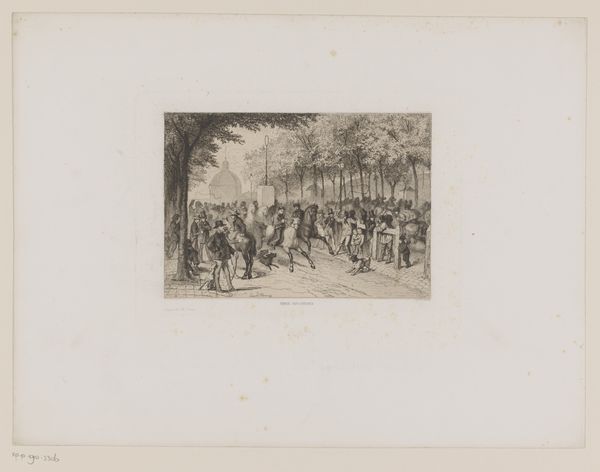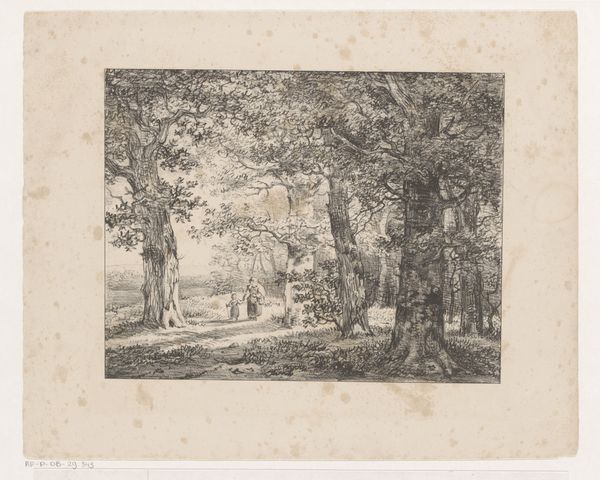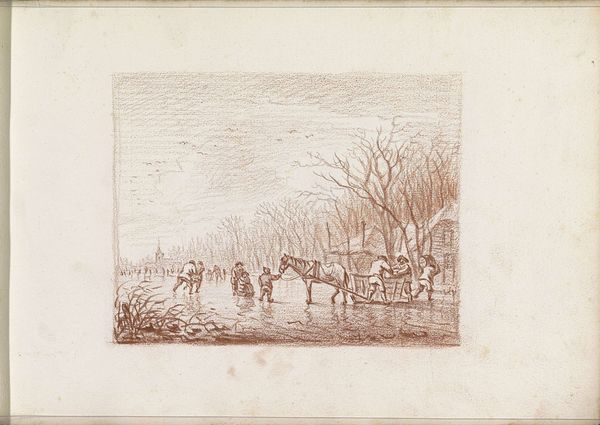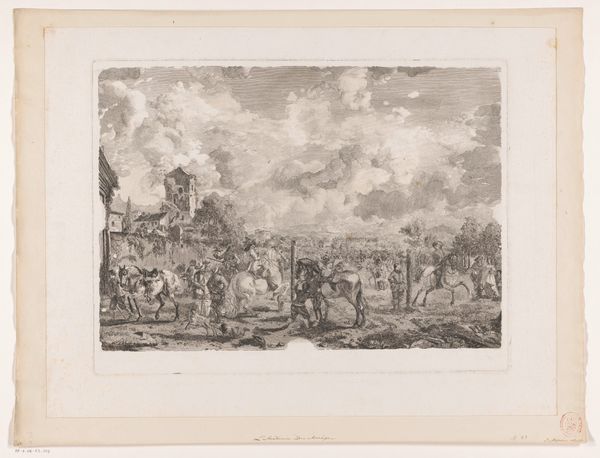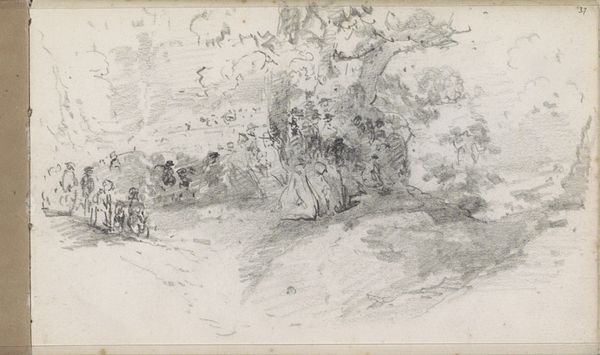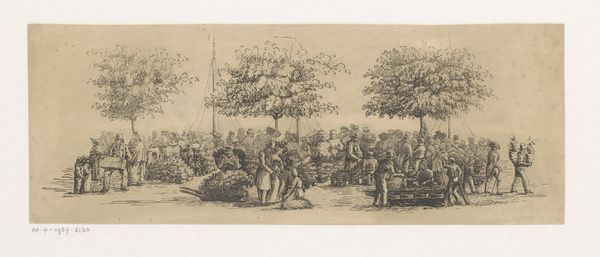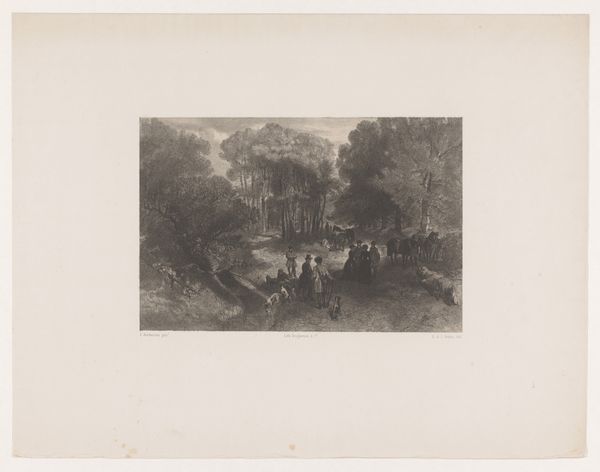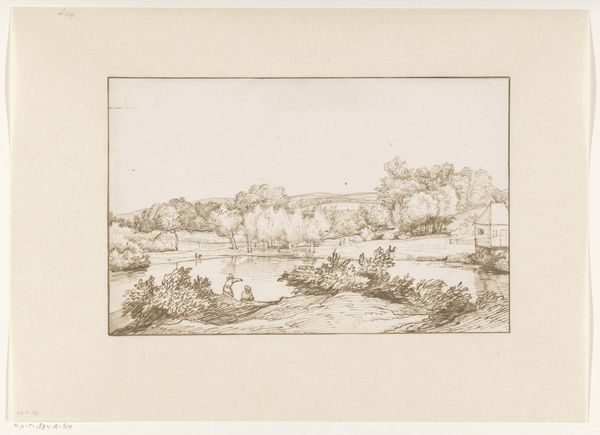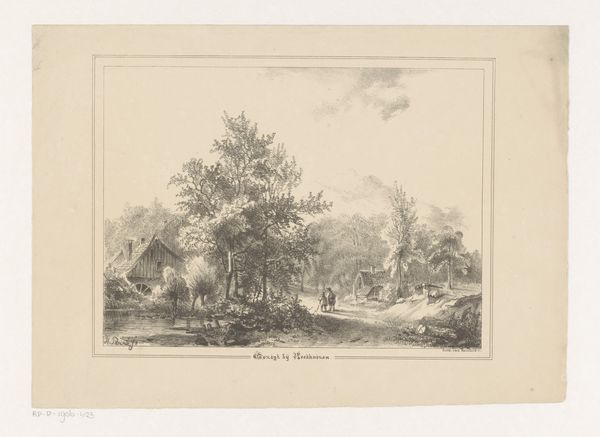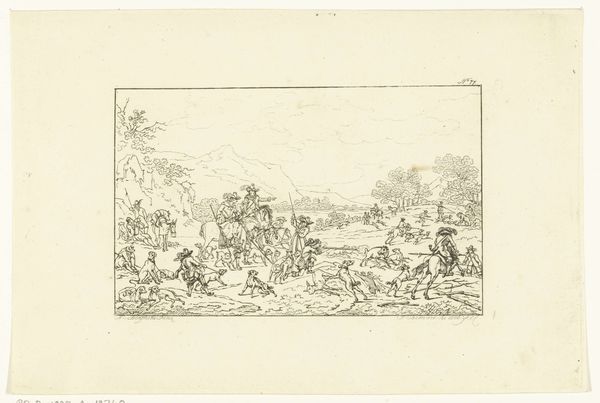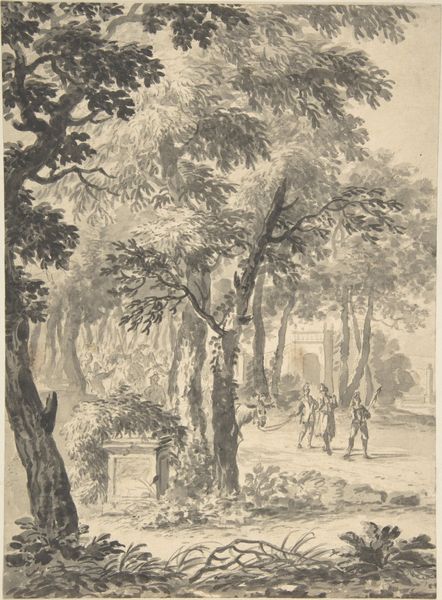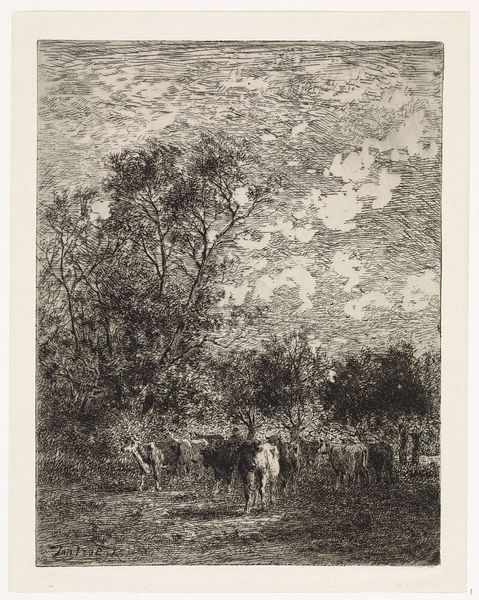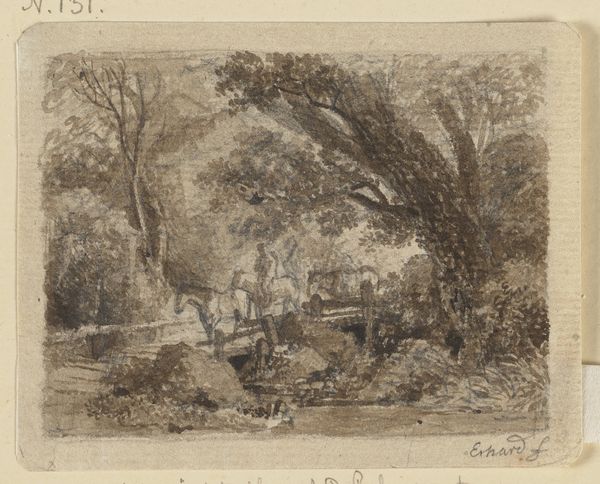
L'Avenue des Champs-Élysées, plate eighteen from Le Long de la Seine et des Boulevards Possibly 1890 - 1910
0:00
0:00
Dimensions: 121 × 203 mm (image); 230 × 286 mm (sheet)
Copyright: Public Domain
Editor: This is Auguste-Louis Lepère's "L'Avenue des Champs-Élysées," a print made sometime between 1890 and 1910. The engraving gives the scene such an ephemeral quality, capturing a fleeting moment of Parisian life. What do you see in this piece, focusing on its formal elements? Curator: Primarily, I observe the strategic deployment of line and tone to evoke spatial depth and textural contrast. Note the density of cross-hatching in the lower-left quadrant; the technique effectively anchors the foreground and directs the viewer's gaze towards the lighter, more diffused rendering of the avenue itself. This manipulation creates a receding perspective. Editor: That's a great observation! The texture almost becomes less defined as we move further into the work. How does this interplay between dark and light contribute to the overall reading? Curator: Precisely! Semiotically, the contrast underscores the dynamic energy of the Champs-Élysées. The lighter, airy treatment of the background suggests not only distance but also the bustling activity inherent to such a public space. The controlled application of detail, becoming less descriptive, translates this dynamism efficiently. Do you notice other effects? Editor: I'm struck by how the architecture on the right feels almost ghostly, fading into the distance, whereas the figures in the foreground have much sharper lines, almost as though the buildings have become less important in that particular moment. It’s an interesting contrast of detail, really pushing the viewer’s eye around the scene. Curator: Exactly. This piece beautifully exemplifies how formal elements contribute meaning, shifting the semiotic weight from the static architecture to the transient human activity, thus elevating the temporal aspect of modern urban existence. The artwork also suggests how carefully manipulating lines in composition and depth alters perception and assigns focus within the scene. Editor: I never really thought about engravings in terms of the movement they can create; seeing it framed in that way makes the print even more dynamic.
Comments
No comments
Be the first to comment and join the conversation on the ultimate creative platform.
